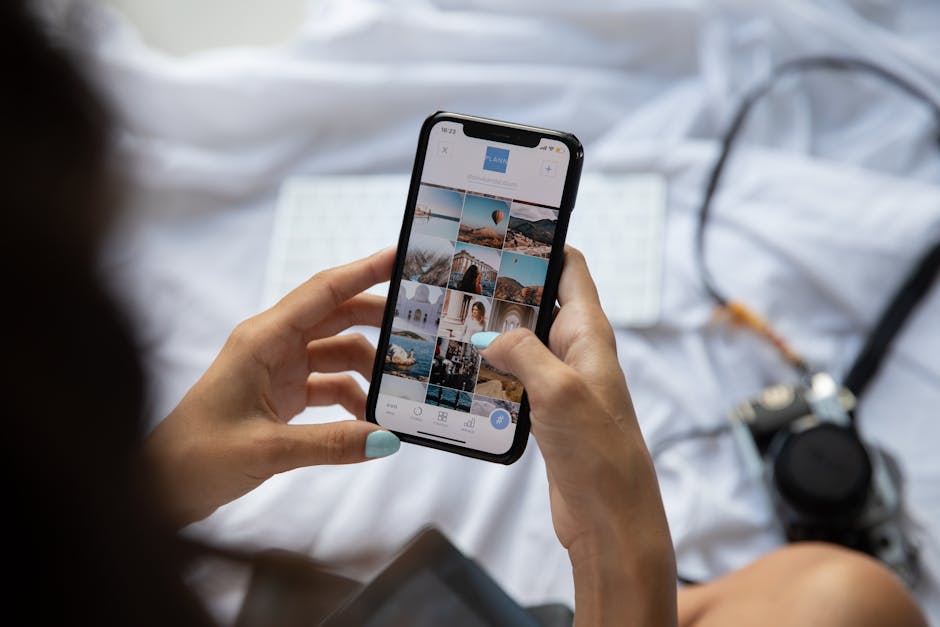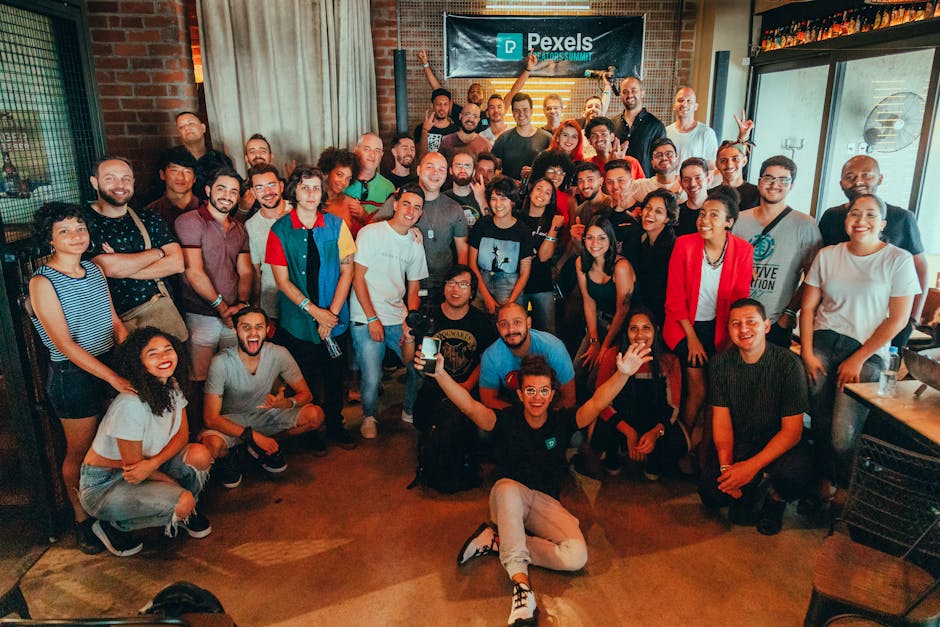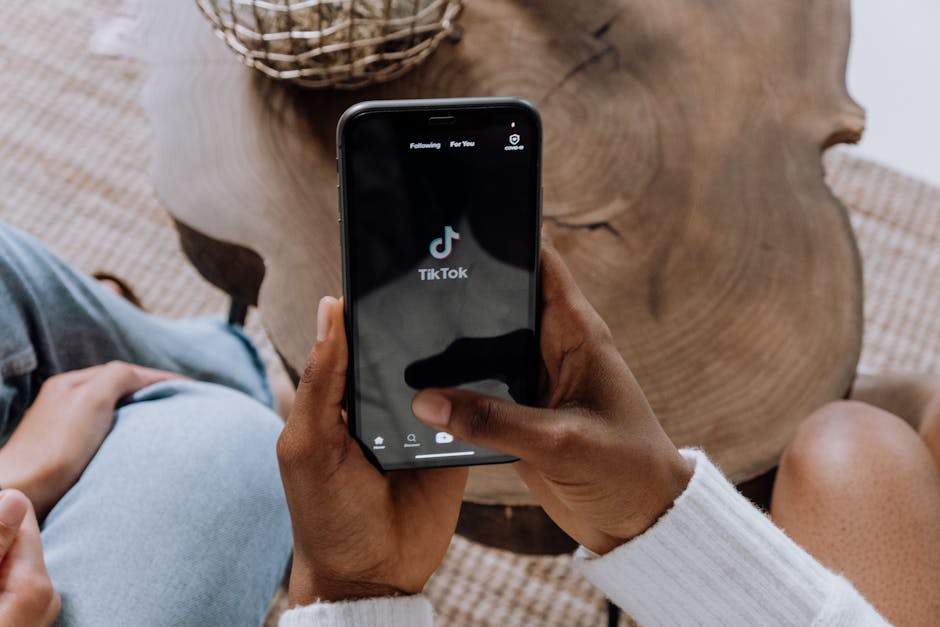The influencer marketing landscape is undergoing a profound transformation, with monetization strategies becoming increasingly sophisticated and diversified. As the industry is projected to reach an estimated $24 billion by 2025, influencers are moving beyond simple sponsored posts to embrace a multi-faceted approach to income generation. This guide delves into the top 10 monetization strategies that are defining success for leading influencers in 2025, offering a comprehensive look at how they are building sustainable and lucrative careers.
From long-term brand collaborations to the burgeoning world of social commerce and digital product creation, understanding these strategies is crucial for any influencer aiming to maximize their earning potential. We will explore market data, core strategies, emerging trends, and practical applications, providing actionable insights for optimizing your monetization efforts and achieving unparalleled growth in the dynamic creator economy.
1. Long-Term Brand Partnerships and Ambassador Programs
Long-term brand partnerships and ambassador programs represent the pinnacle of influencer monetization, offering stability, authenticity, and significant revenue. Unlike one-off sponsored posts, these relationships foster deeper integration between the influencer’s brand and the company’s values, leading to more credible endorsements and sustained income. According to Aspire, 62% of influencers favor long-term partnerships, recognizing their superior ROI for both parties.
Why Long-Term Partnerships are Critical for Influencers
The shift towards sustained collaborations is driven by several key factors. Brands seek genuine advocacy that resonates with audiences, and influencers benefit from predictable income streams and the opportunity to build a more authentic narrative around products they genuinely use and believe in. This approach cultivates trust, a paramount currency in the influencer space, leading to higher engagement and conversion rates.
Benefits of Brand Ambassador Programs
- Consistent Revenue: Provides a stable income stream, reducing the reliance on sporadic campaigns.
- Enhanced Authenticity: Allows influencers to genuinely integrate products into their lifestyle, building trust with their audience.
- Deeper Brand Relationship: Fosters a collaborative environment where influencers can contribute to product development or marketing strategies.
- Increased Credibility: Audiences perceive long-term endorsements as more genuine than one-off promotions.
- Exclusive Opportunities: Often includes early access to new products, participation in brand events, and unique content creation opportunities.
Case Study: Nestlé Purina and Elasticity
Jen Stamulis, Director at Elasticity, highlights the success of ongoing ambassador programs, citing that influencer marketing can generate up to $18 for every $1 spent in campaigns she helped develop for Nestlé Purina. This demonstrates the power of multi-channel ambassador efforts in driving significant returns and deepening audience connections over time. Such programs move beyond transactional relationships, focusing on shared values and sustained engagement.

2. Affiliate Marketing: Driving Revenue Through Recommendations
Affiliate marketing has emerged as a cornerstone of influencer monetization, allowing creators to earn commissions by recommending products or services through tracked links. This performance-based model aligns incentives, as influencers are rewarded directly for driving sales. The growth in this area is significant, with creators generating 71% more affiliate revenue year-over-year, moving away from traditional pay-to-play models.
How Affiliate Marketing Works for Influencers
Influencers integrate unique affiliate links into their content—be it blog posts, YouTube videos, social media captions, or live streams. When their audience clicks these links and makes a purchase, the influencer earns a predetermined commission. This strategy is particularly effective when the recommended products genuinely align with the influencer’s niche and audience interests, enhancing credibility and conversion rates.
Key Aspects of Successful Affiliate Marketing
- Niche Alignment: Focus on products and services that genuinely resonate with your audience and fit your content theme.
- Transparent Disclosure: Always disclose affiliate relationships to maintain audience trust and comply with regulations.
- Unique Discount Codes: Offer exclusive discount codes to incentivize purchases and provide clear tracking for brands.
- Performance Tracking: Utilize platforms like Impact or ShareASale to monitor clicks, conversions, and earnings effectively.
- Value-Added Content: Create comprehensive reviews, tutorials, or comparison guides that highlight the benefits of the products.
Example Earnings and Strategy
Influencers can achieve substantial earnings through affiliate marketing. For instance, generating approximately $1,980 per month from 100 sales at a $19.80 commission each is a realistic target on platforms like Impact or ShareASale. The key is to offer unique discount codes tailored to your audience, which not only incentivizes sales but also provides clear ROI measurement for brands, strengthening future collaboration opportunities.
| Sales Volume | Average Commission Per Sale | Estimated Monthly Revenue | Key Platforms |
|---|---|---|---|
| 50 sales | $19.80 | $990 | Impact, ShareASale |
| 100 sales | $19.80 | $1,980 | Impact, ShareASale |
| 250 sales | $19.80 | $4,950 | Impact, ShareASale |
| 500 sales | $19.80 | $9,900 | Impact, ShareASale |
3. Digital Products and Online Courses: Monetizing Expertise
Selling digital products and online courses has become a highly lucrative passive income stream for influencers. This strategy allows creators to package their knowledge, skills, and unique insights into scalable offerings that can be sold repeatedly without significant additional effort per sale. It’s an effective way to monetize an audience’s trust and interest in an influencer’s specific area of expertise.
The Power of Knowledge-Based Products
From e-books and templates to comprehensive online courses and masterclasses, digital products cater to an audience’s desire for learning and self-improvement. Influencers who have cultivated a niche audience are perfectly positioned to create valuable educational content that addresses their followers’ specific needs or pain points. This not only generates revenue but also solidifies the influencer’s position as an authority in their field.
Examples of Successful Digital Products
- E-books and Guides: Comprehensive written content on a specific topic, such as “A Beginner’s Guide to Sustainable Living” or “Mastering Social Media Photography.”
- Templates and Presets: Customizable digital assets like Notion planners, Lightroom presets for photo editing, or Canva templates for social media graphics.
- Online Courses: Structured educational programs delivered via video, text, or interactive modules, covering subjects like “Advanced SEO for Bloggers” or “The Art of Digital Painting.”
- Workshops and Webinars (Recorded): Pre-recorded sessions that offer in-depth training on a particular skill or topic.
Case Study: Aja Dang’s Notion Wedding Planner
A prime example of monetizing expertise through digital products is Aja Dang, a financial wellness influencer. She successfully sells a $40 Notion Wedding Planner, demonstrating how a niche digital product can generate significant income by addressing a specific audience need. This product, powered by platforms like Shopify, allows her to scale her earnings beyond traditional content creation.
Estimated Earnings from Online Courses
The potential earnings from online courses are substantial. For instance, an influencer could generate approximately $54,000 from 200 course students paying $270 each. Platforms like Teachable or Mighty Networks provide the necessary tools for course creation, hosting, and sales, streamlining the delivery process and allowing influencers to focus on content development and marketing.
4. Merchandise and Branded Products: Expanding Your Empire
Creating and selling merchandise or branded products is a powerful strategy for influencers to deepen their connection with their audience and generate significant revenue. This approach transforms followers into customers, allowing them to physically represent their affinity for the influencer’s brand. It’s about extending the influencer’s identity beyond digital content into tangible goods.
Why Merchandise Resonates with Audiences
Merchandise serves as a physical embodiment of an influencer’s brand, allowing fans to feel a stronger sense of belonging and support. It taps into the emotional connection followers have with their favorite creators, turning them into walking billboards. This strategy is particularly effective for influencers with strong personal brands and highly engaged, loyal fan bases.
Types of Popular Influencer Merchandise
- Apparel: T-shirts, hoodies, hats, and other clothing items featuring the influencer’s logo, catchphrases, or unique designs.
- Accessories: Mugs, phone cases, stickers, keychains, and other small items that are easily shareable and affordable.
- Limited-Edition Collections: Exclusive drops of unique items that create urgency and excitement among fans.
- Niche-Specific Products: Items directly related to the influencer’s content, such as custom art supplies for an art influencer or branded gaming peripherals for a gamer.
Case Study: MrBeast’s Feastables
MrBeast’s Feastables chocolate line is a monumental example of an influencer successfully launching and scaling a branded product. Leveraging his massive audience and unique brand identity, Feastables rapidly gained popularity, demonstrating the immense potential of brand-aligned product success. This venture goes beyond simple merchandise, establishing a standalone consumer brand built on the influencer’s existing reach and trust.
Revenue Potential from Merchandise Sales
The revenue potential from merchandise sales can be substantial. Influencers can estimate monthly revenues of approximately $7,000 from 200 merchandise sales at $35 each. Platforms like Shopify or Printify streamline the process of design, production, and fulfillment, making it accessible for influencers to manage their merchandise lines without extensive logistical overhead. The key is to design merchandise that genuinely reflects the brand identity and offers value to loyal fans.
5. Paid Subscriptions and Exclusive Content: Building Community and Recurring Revenue
Paid subscriptions and exclusive content models offer influencers a stable and predictable income stream by providing their most dedicated followers with premium access. This strategy leverages the deep connection influencers build with their audience, offering a tiered experience that rewards loyalty with unique content and direct engagement opportunities. It’s a powerful way to diversify income and foster a highly engaged community.
The Allure of Exclusivity
Audiences are increasingly willing to pay for exclusive content, early access, and direct interaction with their favorite creators. This model taps into the desire for a more intimate and personalized experience, moving beyond the free, broad-reach content typically found on social media platforms. It creates a sense of belonging and value for subscribers, strengthening the influencer-follower bond.
Types of Exclusive Content Offerings
- Behind-the-Scenes Access: Unfiltered glimpses into the influencer’s creative process, daily life, or upcoming projects.
- Early Content Releases: Subscribers get to view new videos, listen to podcasts, or read articles before the general public.
- Private Q&A Sessions: Live or recorded Q&A sessions where subscribers can ask direct questions and receive personalized answers.
- Exclusive Workshops/Tutorials: In-depth educational content available only to paying members.
- Community Forums/Chats: Private groups or Discord servers where subscribers can interact with the influencer and each other.
- Personalized Shout-outs/Messages: Direct engagement that makes subscribers feel valued and recognized.
Monetization Platforms and Earnings
Various platforms facilitate paid subscriptions, each offering different features and monetization structures. Instagram subscriptions, for example, can earn an influencer approximately $100 per month with 200 subscribers paying $5 each. For more robust community features and higher earning potential, platforms like Mighty Networks can bring in $9,600 per month from 200 paying members, offering advanced tools for content delivery, community management, and event hosting.

6. Live Streaming and Social Commerce: Real-Time Engagement and Sales
Live streaming has become a dominant force in influencer monetization, seamlessly blending real-time engagement with direct sales opportunities through social commerce. This dynamic strategy allows influencers to interact directly with their audience, answer questions, demonstrate products, and drive immediate purchases. According to Sprinklr, live streaming is used by 52.4% of brands as a core part of their influencer marketing campaigns, highlighting its effectiveness in driving conversions.
The Rise of Live Shopping
The global social commerce revenue, significantly driven by influencers and livestream shopping, is projected to hit $1 trillion by 2028, growing at a 14.7% CAGR. This explosive growth underscores the immense potential for influencers to monetize their real-time interactions. Live shopping events create a sense of urgency and community, replicating the in-store shopping experience in a digital format.
Key Elements of Successful Live Streaming for Monetization
- Interactive Demonstrations: Showcasing products in real-time, answering live questions, and providing immediate feedback.
- Exclusive Offers: Announcing limited-time discounts or special bundles available only during the live stream.
- Direct Purchase Links: Integrating clickable product links or shopping carts directly into the live stream interface.
- Audience Engagement: Actively responding to comments, running polls, and incorporating audience suggestions to make the experience dynamic.
- Platform Utilization: Leveraging features on platforms like Instagram Live Shopping, TikTok Shop, or dedicated e-commerce live stream solutions.
Monetization Avenues in Live Streaming
- Direct Product Sales: Selling products directly during the stream, often with integrated checkout.
- Affiliate Link Promotion: Sharing affiliate links for products discussed or demonstrated.
- Viewer Donations/Tips: Audiences can send virtual gifts or monetary tips to support the creator.
- Sponsored Live Sessions: Brands pay influencers to host live streams dedicated to their products.
- Ticketed Live Events: Charging for access to exclusive live performances, Q&As, or workshops.
Impact on Consumer Behavior
Live streaming significantly influences purchasing decisions. The real-time interaction and authentic demonstrations build trust, making consumers more likely to convert. This direct line of communication allows influencers to address concerns, build rapport, and drive impulse buys, making it a highly effective monetization channel.

7. Virtual and In-Person Events: Community Building and Direct Revenue
Hosting events, whether virtual or in-person, provides influencers with a unique opportunity to connect deeply with their audience, build community, and generate direct revenue. These events can range from intimate workshops and masterclasses to large-scale conferences and meetups, offering a premium experience that goes beyond typical content consumption.
Why Events are a Powerful Monetization Tool
Events allow influencers to leverage their authority and community-building skills to create high-value experiences. They provide a platform for direct interaction, networking, and in-depth learning, which audiences are often willing to pay a premium for. This strategy not only generates income but also strengthens brand loyalty and creates memorable experiences for followers.
Types of Events Influencers Can Host
- Workshops and Masterclasses: Focused, interactive sessions designed to teach a specific skill or provide in-depth knowledge.
- Meet-and-Greets: Opportunities for fans to meet the influencer in person, often combined with Q&A sessions or photo opportunities.
- Conferences and Summits: Larger events featuring multiple speakers, panels, and networking opportunities, often centered around the influencer’s niche.
- Exclusive Retreats: High-ticket, immersive experiences for a select group of followers, offering personalized coaching or unique activities.
- Virtual Concerts/Performances: For music or performance-based influencers, ticketed online shows.
Monetization through Event Ticketing
Ticket sales are the primary revenue driver for events. Influencers can price tickets based on the value offered, the exclusivity of the event, and their audience’s purchasing power. For example, an influencer could generate approximately $8,800 for 200 virtual attendees paying $44 each. Platforms like Eventbrite or Mighty Networks provide robust tools for ticketing, promotion, and event management, simplifying the logistical challenges.
Enhancing Event Revenue
Beyond ticket sales, influencers can explore additional revenue streams within their events:
- Sponsorships: Brands can sponsor events, offering financial support in exchange for exposure to the influencer’s audience.
- Merchandise Sales: Selling branded merchandise at in-person events or offering exclusive event-specific merchandise.
- VIP Packages: Offering premium tickets that include extra perks like backstage access, personalized interactions, or exclusive content.
- Product Demonstrations: Integrating product demos from partner brands during the event, potentially leading to affiliate sales.
Creating hybrid event experiences, combining both virtual and in-person components, can significantly broaden reach and monetization potential, catering to a wider audience regardless of geographical location.
8. Coaching and Professional Services: High-Value Offerings
For influencers who have established themselves as experts in a particular field, offering personalized coaching or professional services is a high-value monetization strategy. This approach leverages their specialized knowledge and experience to provide bespoke solutions to individuals or businesses, commanding premium rates due to the direct, one-on-one nature of the service.
Why Offer Coaching or Services?
Coaching and consulting allow influencers to move beyond mass content creation to provide tailored advice and guidance. This is particularly appealing to followers who seek personalized support to achieve specific goals, whether it’s career development, skill acquisition, or business growth. It positions the influencer as a mentor and problem-solver, deepening their impact and earning potential.
Areas for Coaching and Professional Services
- Content Creation Coaching: Guiding aspiring creators on video production, photography, writing, or social media strategy.
- Social Media Consulting: Advising businesses or individuals on optimizing their social media presence and campaigns.
- Niche-Specific Coaching: For fitness influencers, personalized workout plans; for financial influencers, budget planning sessions; for beauty influencers, personalized style consultations.
- Public Speaking Engagements: Being hired to speak at conferences, corporate events, or workshops.
- Brand Strategy Consulting: Helping emerging brands develop their identity and market positioning.
Monetization Potential and Pricing Models
Coaching and professional services typically command higher fees than other monetization methods due to their personalized nature. Influencers can structure their offerings in various ways:
- Hourly Rates: Charging a set fee per hour for consultation calls.
- Package Deals: Offering bundles of sessions or a comprehensive program over several weeks or months.
- Retainer Agreements: For ongoing consulting services to businesses.
- Tiered Services: Providing different levels of service at varying price points to cater to diverse client needs.
For example, an influencer could bring in approximately $7,100 monthly from just 10 clients paying $710 each. The key is to position oneself as an expert and leverage personal connections and testimonials to attract high-value clients. Building a strong portfolio of successful client outcomes is crucial for sustained growth in this area.
9. Micro- and Nano-Influencer Campaigns: Authenticity and ROI
The influencer marketing landscape is increasingly shifting its focus towards micro- and nano-influencers, recognizing their unparalleled authenticity, higher engagement rates, and superior return on investment. While macro-influencers and celebrities still play a role, brands are reallocating budgets to creators with smaller, more dedicated followings. This trend presents a significant monetization opportunity for influencers who prioritize genuine connection over sheer follower count.
The Power of Smaller Audiences
Micro-influencers (10K–100K followers) boast an average engagement rate of 3.86%, which is more than triple that of macro-influencers (1.21%), according to Aspire. This higher engagement translates into more meaningful interactions and a greater likelihood of purchase. Approximately 61% of brands now primarily work with nano- and micro-influencers, indicating a clear market preference.
Why Brands Prefer Micro- and Nano-Influencers
- Higher Engagement: Smaller audiences often lead to more direct and personal interactions, fostering a stronger sense of community.
- Authenticity and Trust: These influencers are often perceived as more relatable and trustworthy, as their recommendations feel more genuine.
- Niche Expertise: Micro-influencers typically operate within highly specific niches, allowing brands to target very precise demographics.
- Cost-Effectiveness: While their rates are lower than macro-influencers, their higher engagement often results in a better ROI.
- Improved Conversion Rates: The intimate connection with their audience often translates into higher conversion rates for promoted products.
Product Seeding Campaigns
A common strategy for brands working with micro- and nano-influencers is product seeding. This involves sending free products to influencers in exchange for authentic reviews and content. While not always directly paid, these campaigns can lead to future paid collaborations and provide valuable content for the influencer’s portfolio. Research indicates that 49% of consumers purchase based on influencer recommendations, making authentic micro-influencer efforts highly lucrative for brands and creating opportunities for influencers.
Monetization Opportunities for Micro-Influencers
- Sponsored Posts and Campaigns: Brands pay for dedicated posts, stories, or videos promoting their products.
- Affiliate Marketing: Leveraging their engaged audience to drive sales through unique affiliate links.
- Long-Term Partnerships: Becoming brand ambassadors for companies that align with their niche.
- Content Licensing: Brands may pay to license content created by micro-influencers for their own marketing channels.
The key for micro- and nano-influencers is to cultivate genuine brand relationships and consistently deliver high-quality, authentic content that resonates with their audience. This builds a strong reputation and attracts ongoing collaboration opportunities.

10. Leveraging Short-Form Video Platforms for Viral Reach
Short-form video content, particularly on platforms like TikTok and Instagram Reels, has become an indispensable tool for influencers seeking viral reach, audience growth, and diverse monetization opportunities. These platforms are continually innovating to support creator monetization, making them central to a comprehensive influencer strategy in 2025.
The Dominance of Short-Form Video
The rapid consumption and highly engaging nature of short-form video make it ideal for capturing attention and driving trends. Platforms are investing heavily in features that allow creators to monetize directly, from in-app tipping to integrated shopping experiences. This format is crucial for discovery and for quickly building a highly engaged audience that can then be funneled into other monetization streams.
Monetization Avenues on Short-Form Video Platforms
- Creator Funds/Programs: Platforms like TikTok and YouTube Shorts offer funds that pay creators based on views and engagement.
- In-App Gifting/Tipping: Viewers can purchase virtual gifts or send direct tips to creators during live streams or on videos.
- Direct Brand Deals: Brands pay influencers to create short-form video content promoting their products or services.
- Affiliate Marketing: Integrating product links or storefronts directly into videos or bios, driving sales for commissions.
- TikTok Shop/Instagram Shopping: Direct integration of e-commerce, allowing users to purchase products featured in videos without leaving the app.
- Live Stream Monetization: As discussed, live streaming on these platforms offers significant opportunities for direct sales and viewer support.
Impact on Influencer Marketing CPM
Despite the massive growth, the influencer marketing CPM (cost per thousand impressions) actually dropped 53% year-over-year, with an average CPM of $4.63 in 2024, according to Aspire. This reflects market maturation and improved efficiency, meaning brands can achieve broader reach more cost-effectively, which in turn encourages more investment in influencer campaigns on these platforms.
Strategic Use of Short-Form Video
- Trend Participation: Actively engaging with trending sounds, challenges, and formats to increase discoverability.
- Cross-Promotion: Using short-form video to drive traffic to longer-form content, digital products, or other monetization channels.
- Authentic Storytelling: Leveraging the raw, unpolished nature of short-form video to build genuine connections with the audience.
- Call-to-Actions: Clearly guiding viewers on what action to take next, whether it’s visiting a link in bio, joining a live stream, or checking out a product.
Major platforms like Instagram ($71B), YouTube ($34B), and TikTok ($23B) lead in ad revenues supporting influencer content, underscoring their critical role as revenue-driving channels for creators globally, especially in markets like the U.S. and Brazil, which dominate Instagram influencer posts (22.7% share for the U.S.).

Frequently Asked Questions (FAQ)
How do I start monetizing as a new influencer?
Begin by building an engaged audience in a specific niche. Focus on creating high-quality, consistent content that resonates with your target demographic. Once you have a foundational audience, explore affiliate marketing and micro-influencer campaigns as initial monetization strategies.
- Build Your Niche: Define your unique content area and target audience.
- Consistent Content: Regularly publish valuable and engaging content.
- Audience Engagement: Actively interact with your followers to build a loyal community.
- Affiliate Marketing: Start with relevant affiliate programs that align with your content.
- Micro-Influencer Campaigns: Seek out brands that value authentic engagement over large follower counts.
What are the most effective strategies for long-term influencer income?
The most effective strategies for long-term influencer income involve diversifying revenue streams and fostering deep relationships. Long-term brand partnerships, creating and selling digital products, and building a paid subscription model offer stability and recurring revenue.
- Long-Term Brand Partnerships: Secure ambassador roles for consistent income and authentic integration.
- Digital Products/Courses: Create scalable income streams by selling your expertise.
- Paid Subscriptions: Offer exclusive content to dedicated fans for recurring revenue.
- Merchandise: Expand your brand into tangible products for loyal followers.
- Coaching/Services: Provide high-value, personalized offerings for premium rates.
Why should influencers focus on micro- and nano-influencers for collaborations?
Influencers should focus on micro- and nano-influencers for collaborations because they offer significantly higher engagement rates and are perceived as more authentic by their audiences. This leads to better conversion rates and a stronger return on investment for brands, making them highly sought after partners.
- Higher Engagement: Micro-influencers have an average engagement rate of 3.86%, triple that of macro-influencers.
- Increased Authenticity: Their recommendations feel more genuine, building greater trust with followers.
- Niche Targeting: They often cater to highly specific niches, allowing for precise audience targeting.
- Cost-Effectiveness: While their individual rates are lower, their high engagement often yields superior ROI.
- Stronger Conversions: The deep connection with their audience translates into higher purchase intent.
When to consider launching your own merchandise line?
Consider launching your own merchandise line when you have a highly engaged and loyal fan base that actively expresses support for your brand. This usually happens after establishing a strong personal brand and a consistent content presence, indicating sufficient demand for tangible products.
- Strong Brand Identity: Your brand is recognizable and resonates deeply with your audience.
- High Audience Engagement: Your followers consistently interact with your content and express strong loyalty.
- Consistent Content Output: You have a reliable content schedule that keeps your audience active and growing.
- Audience Demand: Your followers frequently ask for ways to support you or express interest in branded items.
- Diversification Goal: You are looking to add a new, scalable revenue stream beyond sponsored content.
What are the benefits of live streaming for influencer monetization?
Live streaming offers immediate, interactive engagement with your audience, fostering a strong sense of community and trust that directly translates into sales. It allows for real-time product demonstrations, Q&A sessions, and exclusive offers, driving impulse purchases and direct revenue through integrated shopping features and viewer donations.
How can influencers effectively use affiliate marketing?
To effectively use affiliate marketing, influencers should select products that genuinely align with their niche and audience interests. Transparency about affiliate links, offering unique discount codes, and creating valuable content (e.g., reviews, tutorials) that highlights product benefits are crucial for driving conversions and maintaining trust.
What types of digital products are most profitable for influencers?
The most profitable digital products for influencers are typically those that package their unique expertise and can be scaled easily. Online courses, e-books, templates (e.g., Notion planners, social media templates), and presets (e.g., Lightroom presets) are highly profitable as they require a one-time creation effort but can be sold infinitely.
How do paid subscriptions benefit both influencers and their audience?
Paid subscriptions provide influencers with a stable, recurring income stream and a highly engaged, dedicated community. For the audience, subscriptions offer exclusive content, early access, direct interaction, and a more intimate experience with their favorite creator, fostering a deeper sense of connection and value.
What is social commerce and why is it important for influencers?
Social commerce integrates e-commerce directly into social media platforms, allowing users to discover and purchase products without leaving the app. It’s crucial for influencers because it leverages their direct influence and audience trust to drive immediate sales through features like in-app shopping, livestream shopping, and shoppable posts, significantly boosting conversion rates.
Can influencers make a full-time living from their content?
Yes, many influencers successfully make a full-time living from their content by diversifying their income streams. Combining strategies like long-term brand partnerships, affiliate marketing, digital product sales, and paid subscriptions creates a robust and sustainable financial model, allowing them to turn their passion into a viable career.
What role does authenticity play in influencer monetization?
Authenticity is paramount in influencer monetization. Audiences trust recommendations from creators they perceive as genuine, leading to higher engagement and conversion rates. Brands also prioritize authentic partnerships for better ROI. Disclosing sponsored content and only promoting products you genuinely believe in are critical for maintaining audience trust and long-term success.
How important are short-form video platforms for growth and monetization?
Short-form video platforms like TikTok and Instagram Reels are critically important for both audience growth and monetization. Their viral potential allows for rapid discovery, while integrated features like creator funds, in-app gifting, and direct shopping links provide diverse revenue streams. They are essential for capturing attention and driving traffic to other monetization channels.
What is the average ROI of influencer marketing?
Influencer marketing delivers an average ROI of $5.78 per $1 spent in 2025, almost double the return of traditional digital ads. This high ROI supports increased budget allocation towards creator-driven strategies, making it an attractive channel for brands and a significant opportunity for influencers.
How can influencers manage multiple monetization strategies effectively?
Managing multiple monetization strategies effectively requires strategic planning, time management, and leveraging automation tools. Prioritize strategies that align with your content and audience, use platforms that streamline processes (e.g., Shopify for merchandise, Teachable for courses), and consider outsourcing tasks like email marketing or community management to scale efficiently.
What are the ethical considerations for influencer monetization?
Ethical considerations for influencer monetization primarily revolve around transparency and authenticity. Always disclose sponsored content and affiliate relationships clearly (e.g., #ad, #sponsored). Only promote products or services you genuinely believe in and would use yourself. Avoid deceptive practices or misleading claims to maintain audience trust and comply with regulatory guidelines (e.g., FTC guidelines).
Conclusion: The Future of Influencer Monetization
The landscape of influencer monetization in 2025 is characterized by diversification, authenticity, and strategic engagement. The era of relying solely on sponsored posts is giving way to a multi-faceted approach that includes long-term brand partnerships, robust affiliate marketing, the creation of scalable digital products, and the burgeoning opportunities within social commerce and live streaming. Influencers who successfully navigate this evolving environment are those who prioritize building genuine connections with their audience, consistently deliver high-value content, and strategically diversify their income streams.
The shift towards micro- and nano-influencers underscores the market’s demand for authenticity and deep engagement, while the dominance of short-form video platforms highlights the importance of viral reach and dynamic content. By embracing these 10 strategies, influencers can not only maximize their earning potential but also build sustainable, impactful careers that resonate with their audience and deliver exceptional value to brands. The future of influencer monetization is bright, offering unprecedented opportunities for creators who are agile, innovative, and deeply committed to their craft.








